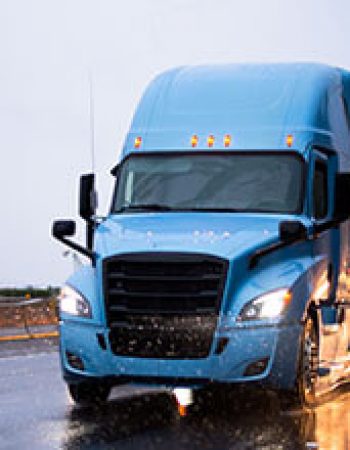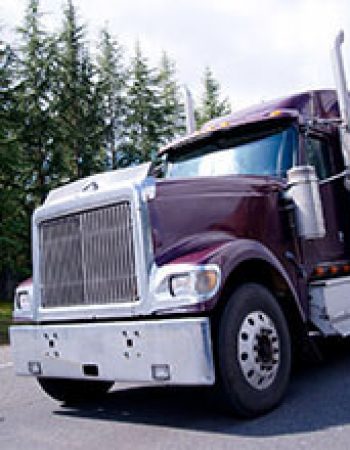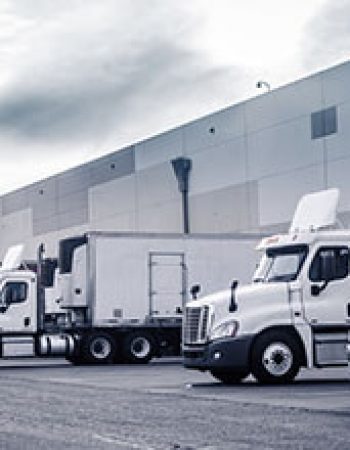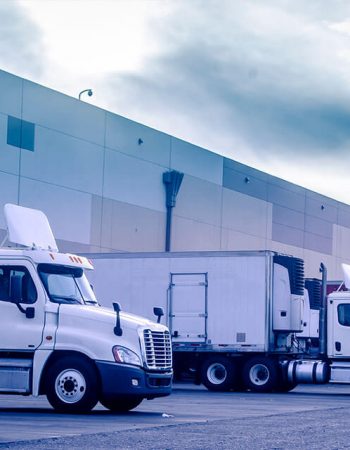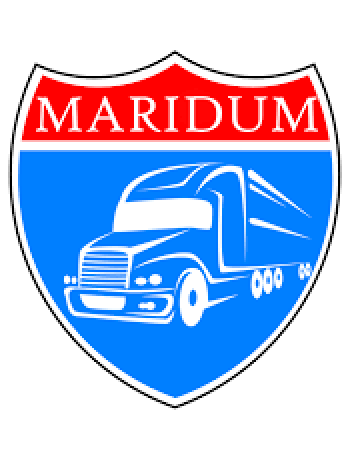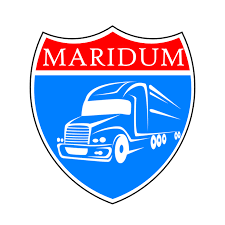At Maridum, we pride ourselves on going above and beyond for our clients, owner operators, drivers, and staff. We believe that being the best in the business involves synergy between all areas of the business. Our company was founded by two truck drivers who wanted to offer a better experience for others in the business. They know the issues that drivers face, and they explored other areas of the industry to find out how they could improve it.
Our founders wanted to provide the best experience possible for everyone on the staff. They made improvements in areas such as safety, dispatching, and support for drivers when they are on the road. Their goal was to fill in the gaps and to create a company that excelled in all areas of the business. By taking this approach, Maridum has been able to create an environment that keeps drivers happy and is conducive to growth.
Maridum knows that the heart and soul of their business are the drivers moving the goods. When drivers are happy, clients are happy, and everyone benefits. We know that reputation is everything, and the only way to build this reputation is to deliver consistent and reliable service to every single customer every time. This means having the best staff of drivers possible, and we know that regardless of the truck you own, we need to support you and give you a good experience so that we can maintain our competitive advantage and continue our road to becoming the best trucking company in the nation.
We believe in careful planning and attention to the details with every load is important to keep the costs down and to be able to offer high quality service to our customers.
We have many different trailer types available and can haul many specialty loads. If you are driving one of our trucks, you can rest assured that it is newer and has been maintained to keep you comfortable and to be compliant with all DOT regulations.
We believe that our owner operators should have the support they need to be successful, and we intend to provide an excellent working environment for all of our staff in any position.
We always believe that our customers should receive excellent, professional service from the time you first call us until the load is delivered. We also believe that our customers should never have any surprises when it comes to the bill.
Whether you are a customer who needs our services, or someone who wants to drive for us, Maridum is an excellent choice that is committed to helping everyone get what they need when it comes to excellent transportation and logistics services.
We are always looking for ways to improve and do things better, and that is one of the reasons why we are one of the best in the industry.
Dry Van
Choosing the right type of equipment for your load is important, and at Maridum, we have several different options available. One of our most popular options is dry van shipping. Dry van shipping is the most common type of truck that you see on the highway. It is essentially a large trailer that is connected to a truck. They are designed to haul pallets, boxes, and many other different types of materials.
One of the things to consider when choosing a dry van truck is that they do not have temperature control or other means to control the environment of the cargo. This is not a good choice for items such as food and beverages, cleaning supplies that need to be kept within a certain temperature range, or items that cannot withstand high heat. They are an excellent choice for things such as consumer goods that include clothing, machinery, packaged foods that do not need to be kept at a certain temperature, and some electronic equipment.
The area inside of a dry van is large, but because it is an enclosed area, there are limits. It is a versatile choice, and they do a good job of protecting the cargo from weather conditions such as rain, wind, or snow. They are also lockable to prevent theft. You can choose them for full truckloads or less-than-truckload (LTL) shipments. Sometimes you can receive special rates if it is possible to combine LTL loads through freight consolidation.
Dry van trailers come in many different sizes. The most common dimensions are 48-foot and 53-foot long trailers. Most of them are a maximum of 8.5-feet wide, 110 inches high, and can carry a maximum of 45,000 pounds. If you have a smaller load, you can sometimes find 28-foot trailers that are a little bit shorter in height and can carry a maximum of 22,500 pounds. Sometimes, these can be hooked together in chains of two or three trailers at once. These are an excellent choice for short-range or smaller cargo loads.
Loading and unloading a dry van is easy because most of them can easily accommodate a standard forklift or pallet jack. In some locations, you can hook up a conveyor belt, or load and unload the truck manually. They keep the material and products organized, making loading and unloading quick and easy. You can also have the trailer picked up and dropped off after loading and unloading is complete.
Dry can shipping is an excellent choice as long as the materials do not have to be kept within a certain temperature range. They keep the load dry and work for many transportation needs in a wide range of industries, which is one reason they are the most common type of service available. As long as this is a suitable choice of transportation for your load, it is easy to find a truck available when you need it.
Reefer
Reefer is the common trucking term for a refrigerated truck. They are essential for products that need to be kept cold, such as fresh produce, beverages, and sensitive electronics that cannot be exposed to high heat. The cab and the unit is usually a standard trailer and cab, but the trailer is specially designed to haul perishable goods. There are many different types of reefer trailers available.
First off, some trailers are considered cooling vans. They are insulated and vented but do not have an active cooling system. To be considered a reefer, they must include an active cooling or refrigeration system. In some cases, reefer can be designed to provide warming of cargo, but this is much less common than using them for refrigeration. One circumstance where a reefer truck is used for warming is in the transport of live plant or animal material during cooler months.
Several different systems are available for powering the cooling system of a reefer truck. You can find diesel power generators and cryogenic cooling systems. The cooling system in a reefer truck is similar to a standard refrigerator. It consists of a compressor, condenser, and evaporator. It is a closed system that works by circulating the refrigerant throughout the various components of the system. The cooling is provided by the evaporation and the refrigerant, which is then recirculated back through the system to the compressor, and the cycle starts all over again. It is a large refrigerator on wheels.
A reefer truck is a more complex system than a standard trailer. Most are 53-feet long, but they are available in other sizes, too.
They usually consist of the reefer unit, an insulated box, an air chute, air ride suspension, and an automatic tire inflation system. One thing that sets a reefer track apart from a dry van trailer is that for the unit to work properly, everything requires fuel. This means a higher cost of operation for the driver and the company.
Most reefer trucks carry about 50 gallons of fuel, which can last about four to five days, but this can vary with outdoor temperatures, the size of the load, and other factors. You can find units that vary from negative 85 degrees Fahrenheit to up to 104 degrees Fahrenheit. They are an excellent choice for long-distance transport of perishable goods that include frozen meats, fresh produce, and other items where you need to maintain a specific temperature range.
Of course, because the fuel costs are more expensive on a reefer truck, they are also more expensive to hire. Sometimes, this is necessary to make sure that the products are sellable once they reach their destination. One thing that you need to consider is that if you need to ship frozen foods, the food must always already be frozen before loading it onto the truck. The truck does not have the capability of taking an unfrozen product and freezing it, but it can maintain frozen foods if they are already frozen.
If you need to ship temperature-sensitive products, Maridum has a range of reefer trucks available to meet your needs. Simply give us a call, and we can find one of our trusted owner operators to get your goods on the road to their destination quickly and safely.
Flatbed
Maridum also has a range of flatbed and step deck trucks available for your needs. A flatbed is simply a trailer bed without a cover on top. A step deck was invented to add a little bit more versatility and convenience to a conventional flatbed trailer. A step deck is sometimes called a drop deck trailer because it can allow for taller cargo loads. The trailer on a step deck trailer sits closer to the road.
When choosing the type of trailer that you need, you need to understand that there are several different variations of step deck trailers. A flatbed is excellent for items such as construction machinery that can be loaded and unloaded using a ramp and its own power. Most step deck trailers have a single upper deck and lower deck. Some have a double drop trailer, which has a front upper deck and back upper deck with a lower deck in the center. The heights and dimensions of the decks can vary. Some of them have a top deck that can range anywhere from 5 feet to 11 feet. They have bottom decks that can range from 36 inches to over 8.5 feet. You have a wide range of choices when it comes to finding a flatbed or step deck truck.
Step deck trucks come in tandem axle and spread axle versions. Tandem axles have the wheels close together, and spread axles have groups of axles that are 10 feet apart part. The difference between these two types of trailers is that tandem axles can allow for 17,000 pounds per axle or 34,000 pounds for the entire tandem axle group. With a spread axle truck, each axle is treated as a single axle, which has a load limit of 20,000 pounds. However, a spread axle trailer can handle up to 40,000 pounds combined.
A spread axle trailer is more forgiving on loaded weight and weight distribution than a tandem axle trailer, but a tandem axle trailer is a little more maneuverable and can get into tight or difficult locations more easily.
Another variation is a lowboy truck, where the entire deck is only a few inches off the road. The advantage is that these types of trucks are excellent for hauling oversized equipment because they allow for the maximum vertical room. Cargo that is above 8 feet faces certain restrictions, and lowboys provide additional maximum footage in height. A step deck truck allows you to haul equipment that you could not otherwise move because of its size and dimensions.
One of the advantages of flatbeds and step decks is that they are easy to load. You can use a crane to drop the load in from overhead, or you can load it from the side. Most of them have a ramp coming off the back of the trailer, or you can back them up to a standard loading dock.
One thing to consider is that a flatbed or step deck is an open bed and your equipment will be exposed to the elements unless you provide a cover. One of the advantages of these types of trailers is the versatility and the types of commodities that they can haul. Many of them can even haul overlength loads, which extend over the end of the trailer, but state regulations differ as to whether this is allowed and what is required to do this. Some types of loads may require a special permit. If you have a load where a flatbed or step deck truck would be appropriate, be sure to give Maridum a call and we will be happy to get you started.
How should I package my items?
When shipping goods, it’s always important to minimize movement. Pack crates or boxes as full
as possible, with heavier items on the bottom. If the crate is not filled, use packing material
to plug the empty spaces.
How are freight shipments tracked?
Freight service providers offer tracking services online to access a shipment’s status 24/7
from your computer or mobile device. You can track a shipment with a BOL number, but you can often
access the shipment’s location with the pro number, PO number, shipment reference number and shipment
number as well.


